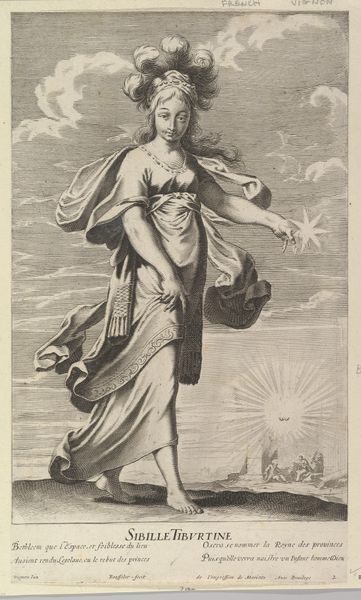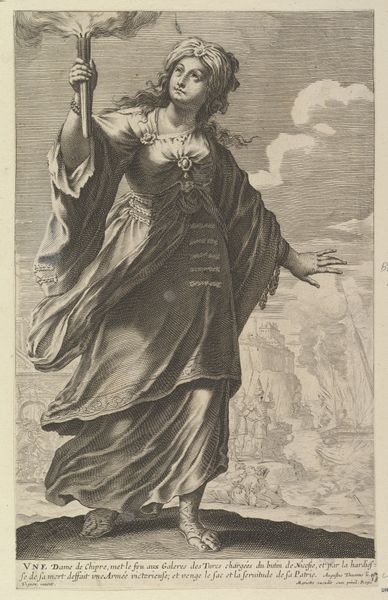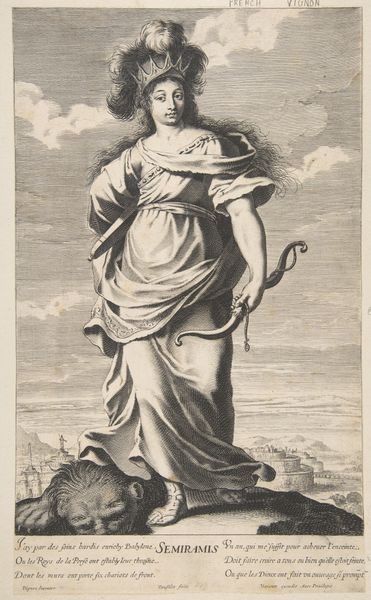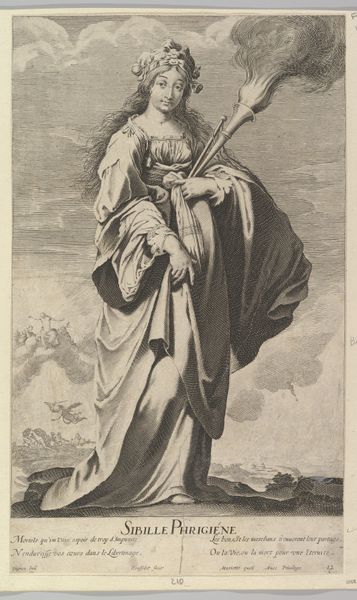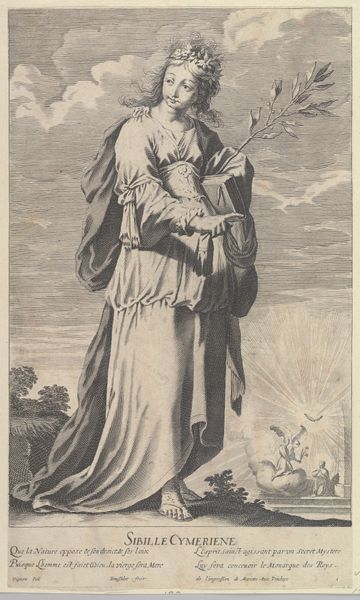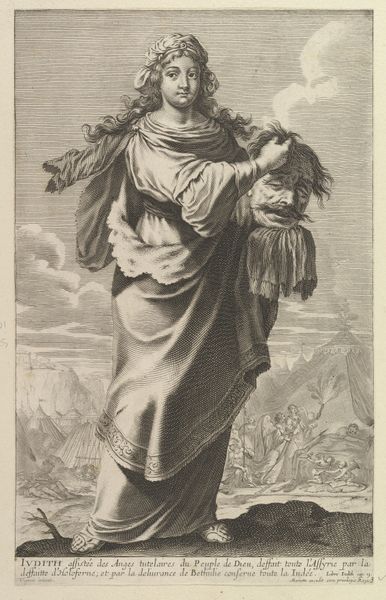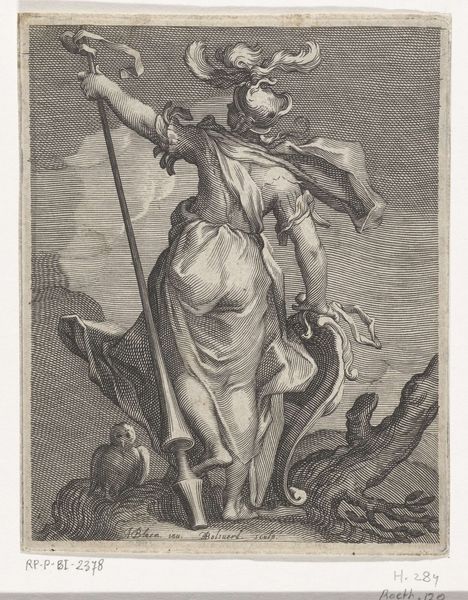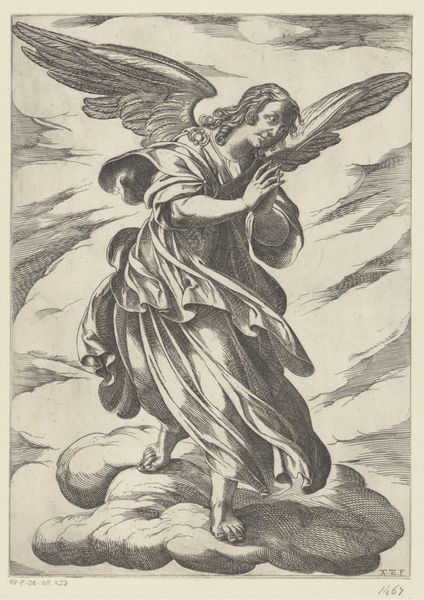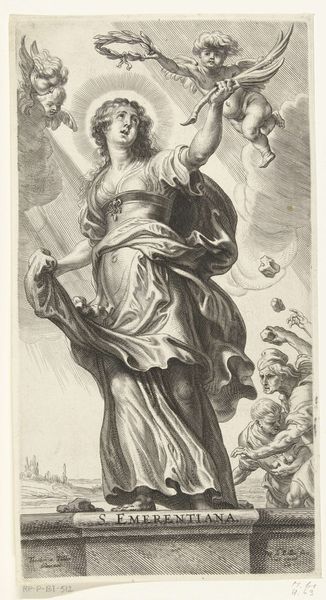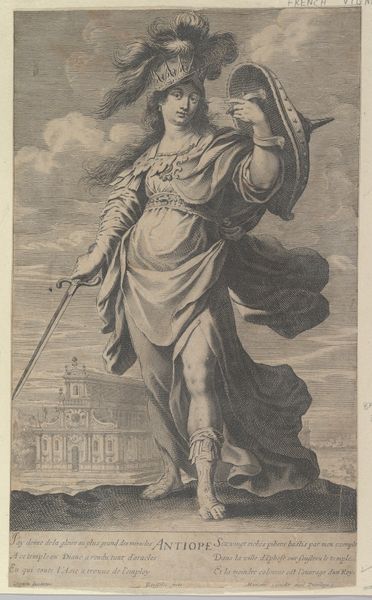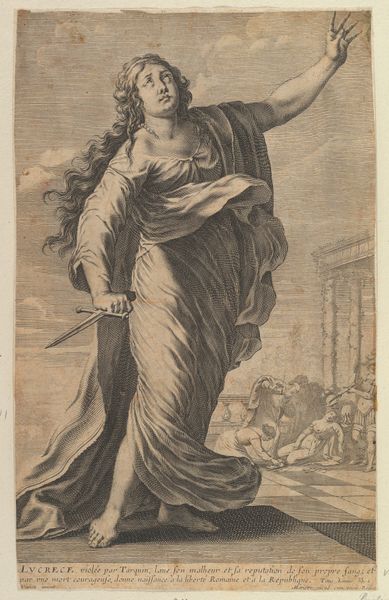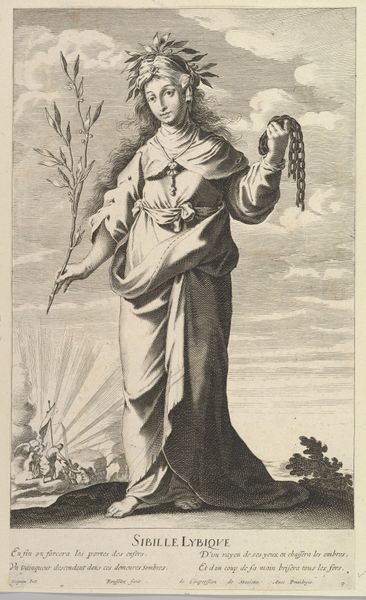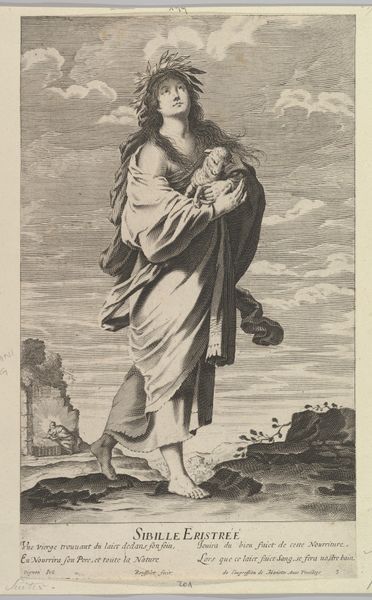
Sibyl of Europe, from La Galerie des femmes fortes 1630 - 1640
0:00
0:00
drawing, print, engraving
#
portrait
#
drawing
#
baroque
# print
#
portrait drawing
#
history-painting
#
engraving
Dimensions: sheet: 14 3/16 x 8 7/16 in. (36 x 21.4 cm)
Copyright: Public Domain
Curator: Look closely at this engraving, "Sibyl of Europe, from La Galerie des femmes fortes," made sometime between 1630 and 1640 by Gilles Rousselet. The piece is part of the Metropolitan Museum of Art's collection. Editor: It strikes me as surprisingly graceful. Despite being a print, the flowing lines give it a real sense of movement. The figure seems to be floating. Curator: Absolutely, consider the production of prints like these. They were a primary form of circulating imagery and ideas throughout Europe. Engravings democratized access, taking subjects and styles once confined to elite paintings and distributing them widely to different socio-economic strata through relatively inexpensive and mechanically reproduced images. Editor: True. Speaking formally, there's a powerful dynamism to the composition. Notice how the drapery swirls around the central figure. And how it counterbalances with the static figure floating near the sun in the background. There is an intentional tension between stability and change, very much a Baroque characteristic. Curator: This image’s appearance in “La Galerie des femmes fortes” is significant too, contextualizing her amidst powerful historical and mythological women. The artist uses her figure to present an allegory for European strength, a kind of advertisement for continental authority expressed in artistic terms and distributed for commercial purposes. Editor: I can see that. From the arrangement of forms, the soft lines that make up the clouds versus the hard carved edges of the lettering, it conveys a feeling of progress – forward movement into a hopeful, learned, if somewhat volatile future. It invites a response through engagement with these carefully contrasted techniques. Curator: Indeed. What began as artistic experimentation in portraiture among elite patrons in the late Renaissance transitioned into mass-produced media catering to different markets. The image embodies the evolving material culture. Editor: It's interesting to examine that relationship between technical production and artistic effect. This close examination makes it evident how intentional choices create specific responses. Curator: Studying the image's journey through production and distribution allows us to appreciate its multifaceted role in shaping perception of power and femininity at the time. Editor: Agreed. Seeing how technique is woven into every element and how successfully it draws out an immediate, lasting emotive response offers another appreciation entirely.
Comments
No comments
Be the first to comment and join the conversation on the ultimate creative platform.
